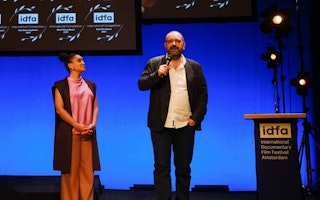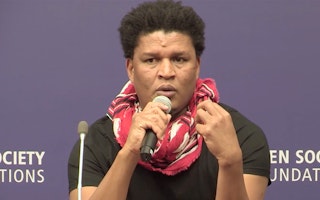Taking a Closer Look at Surveillance Culture Through Photography
By Yukiko Yamagata
What right do governments, corporations, and individuals have to collect and retain information on your daily communications? What tools—both today and in the past—have been used to monitor your activities? What are the immediate and far-reaching effects?
These questions unite the nine bodies of work selected for the fall 2014 exhibition “Watching You, Watching Me.” This upcoming installment of our Moving Walls documentary photography series explores how photography has been used both as an instrument of surveillance and as a tool to document, expose, and challenge the impact of surveillance on civil liberties, human rights, and basic freedoms.
The projects were selected through an open-call process, and we were inspired by the range of ways documentary artists are tackling the challenge of using photography to visualize something that is both omniscient and covert. Many projects we received highlighted the technologies and mechanisms that enable surveillance, while others focused on the activities of governments, industries, and corporations that are creating and employing such tools. Some projects were international in scope, while others explored the theme from a very personal point of view.
There were a range of artistic approaches, from appropriating existing imagery (for example from historical archives, networked CCTV cameras, or Google Street View), to using surveillance-related technologies in the image-making process, and employing more traditional documentary language to capture fleeting historical events.
The nine artists and projects selected are as follows:
- Edu Bayer, “Qaddafi Intelligence Room.” Bayer documents late Libyan dictator Muammar al-Qaddafi’s security headquarters in Tripoli, just a few days after it was abandoned when rebels stormed the capital.
- Josh Begley, “Plain Sight: The Visual Vernacular of NYPD Surveillance.” Begley draws on AP-released documents to create a collage of photographs used by the New York Police Department’s Demographics Unit in its surveillance of Muslim-affiliated businesses and institutions.
- Paolo Cirio, “Street Ghosts.” Cirio uses appropriated imagery of people captured on Google Street View to create street installations at the very sites where they were originally photographed.
- Hasan Elahi, “Thousand Little Brothers.” After an erroneous tip linking the artist to terrorist activities led to a six-month-long FBI investigation, Elahi began to voluntarily monitor himself by photographing mundane details from his daily life and sending these images—now totaling nearly 70,000—to the FBI.
- Andrew Hammerand, “The New Town.” Hammerand uses a publicly accessible networked CCTV camera in an anonymous midwestern American town to create images that reflect on issues of surveillance and privacy.
- Mishka Henner, “Dutch Landscapes.” Henner appropriates censored Google Earth images of significant political, economic, and military locations to draw attention to the Dutch government’s attempts to prevent their own civic buildings from being monitored.
- Simon Menner, “Images from the Secret Stasi Archives.” Menner presents images found in the East German State Security Service archives to reflect on how photography was used by the Stasi as a tool to train spies, conduct secret home searches, and track people’s movements.
- Julian Roeder, “Mission and Task.” Roeder highlights the border surveillance system EUROSUR, which connects all border control systems of individual EU member states, allowing them to share and exchange information.
- Tomas van Houtryve, “Blue Sky Days.” Reflecting on the changing nature of personal privacy, surveillance, and contemporary warfare, van Houtryve uses a drone to create aerial photographs in the United States of the types of gatherings that are targeted in foreign air strikes in Pakistan and Yemen, as well as locations where drone use has been approved on American soil.
“Watching You, Watching Me” will be open to the public at the Open Society office in New York from November 4, 2014 to May 8, 2015.

Until December 2021, Yukiko Yamagata was curatorial and deputy director of Culture and Art at the Open Society Foundations.


